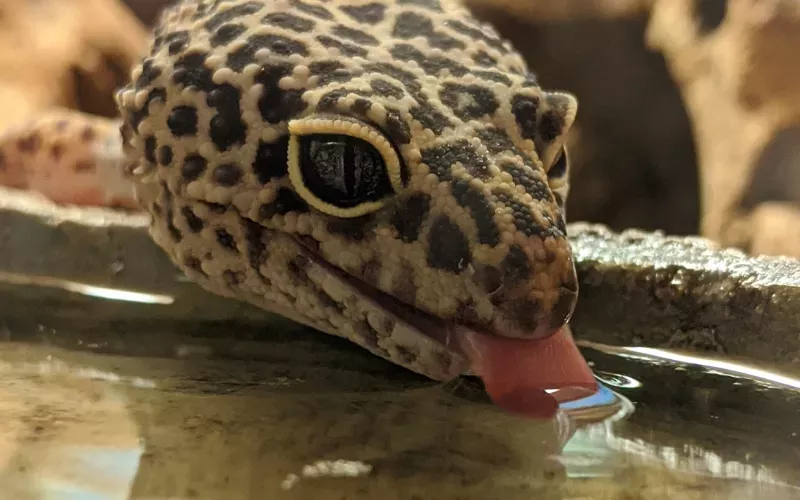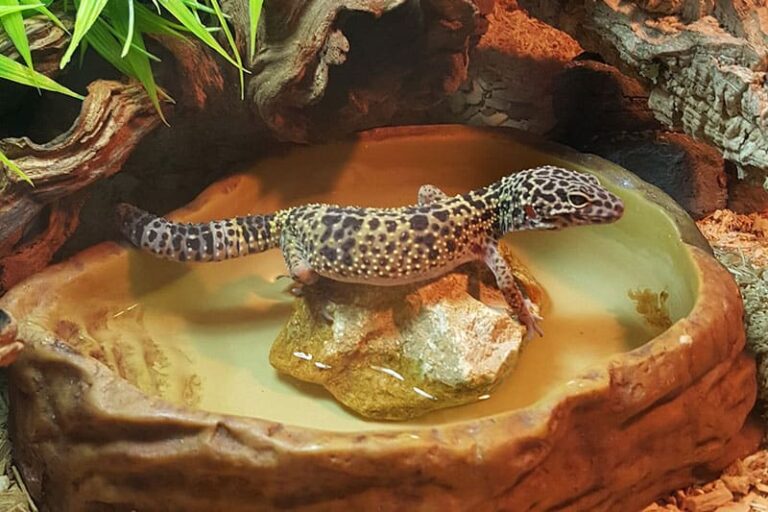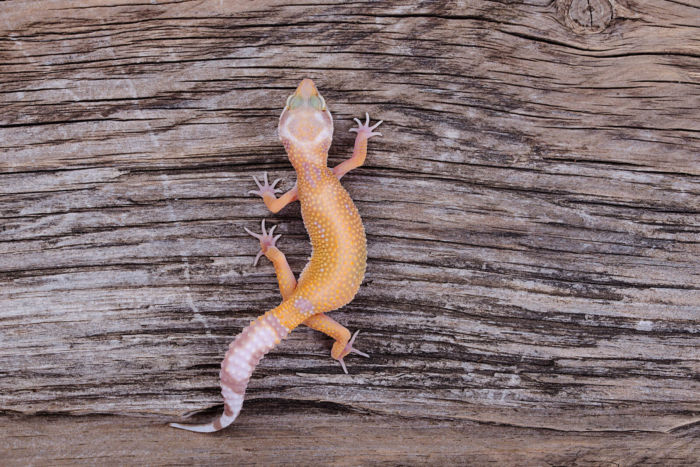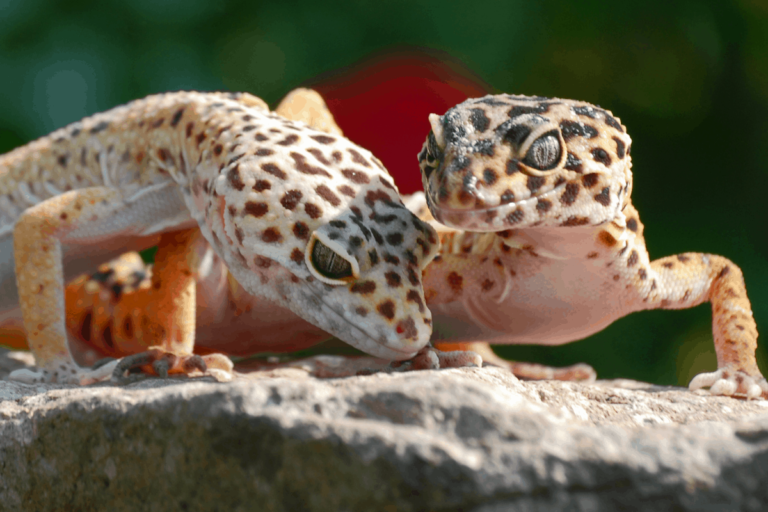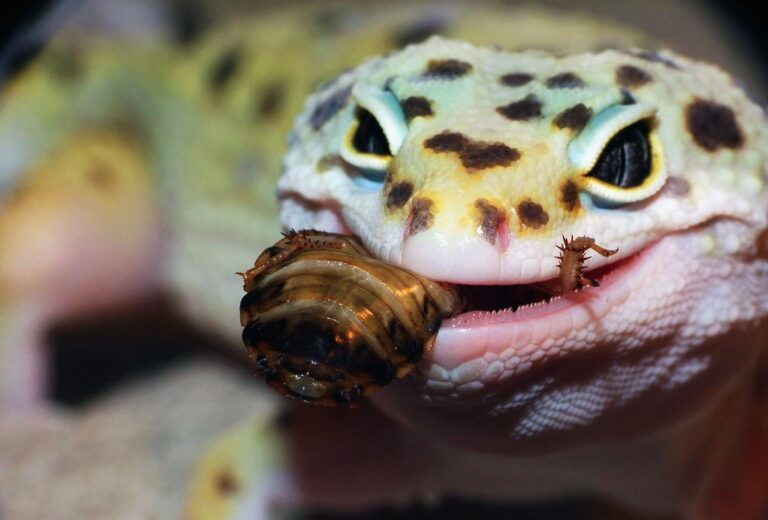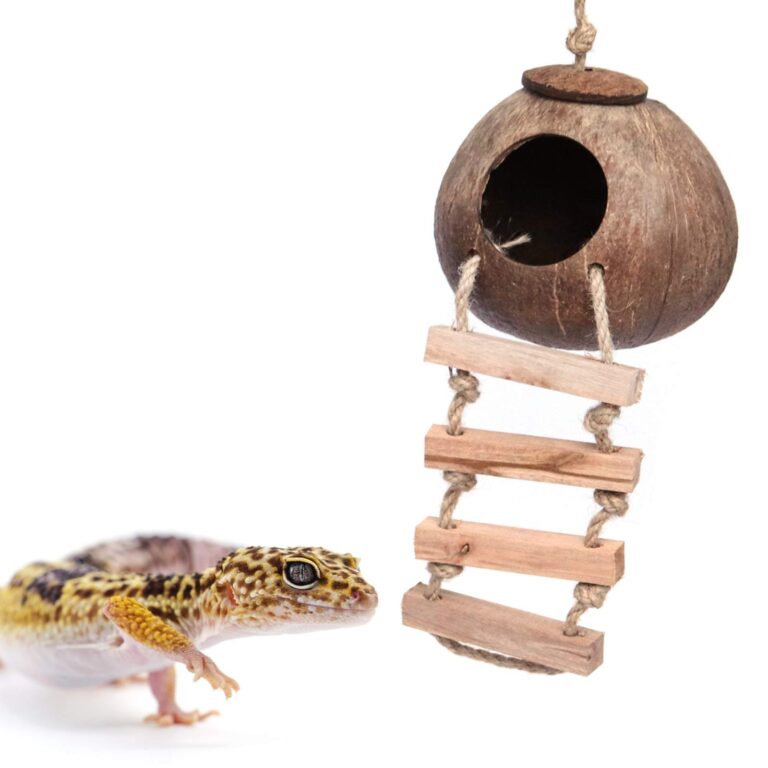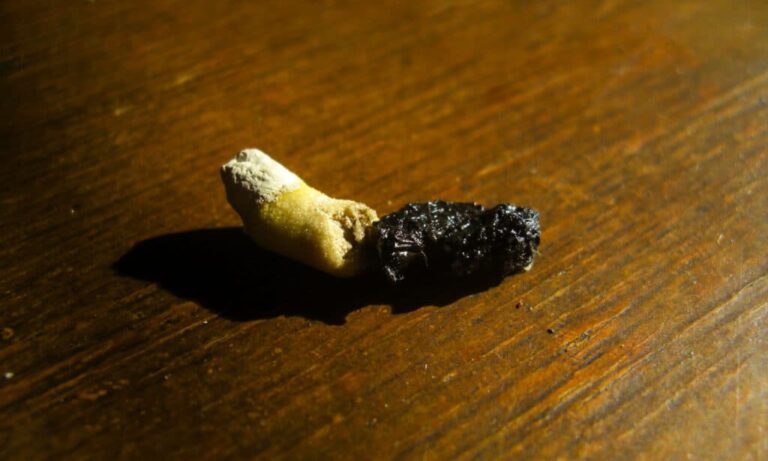Can Leopard Geckos Drink Tap Water? Exploring The Best Hydration Options
As I peered into the glass terrarium, my curious leopard gecko, Luna, gazed back at me with those enigmatic eyes. It was a quiet evening, and I found myself pondering an essential question that every responsible reptile owner faces: Can leopard geckos safely drink tap water?
My journey into the world of them began when I adopted Luna from a local reptile rescue. She was a small, fragile creature, her spotted skin glistening under the warm glow of her habitat’s heat lamp.
So, in my quest to provide the best care for Luna, I embarked on a quest to understand every facet of her well-being.
Yes, tap water can contain chlorine and other substances that might not be safe for your leopard gecko. It’s essential to treat or purify tap water before offering it to your pet to ensure their health and well-being.
Let’s begin our journey to Hydration.
Why Water Matters for Geckos?
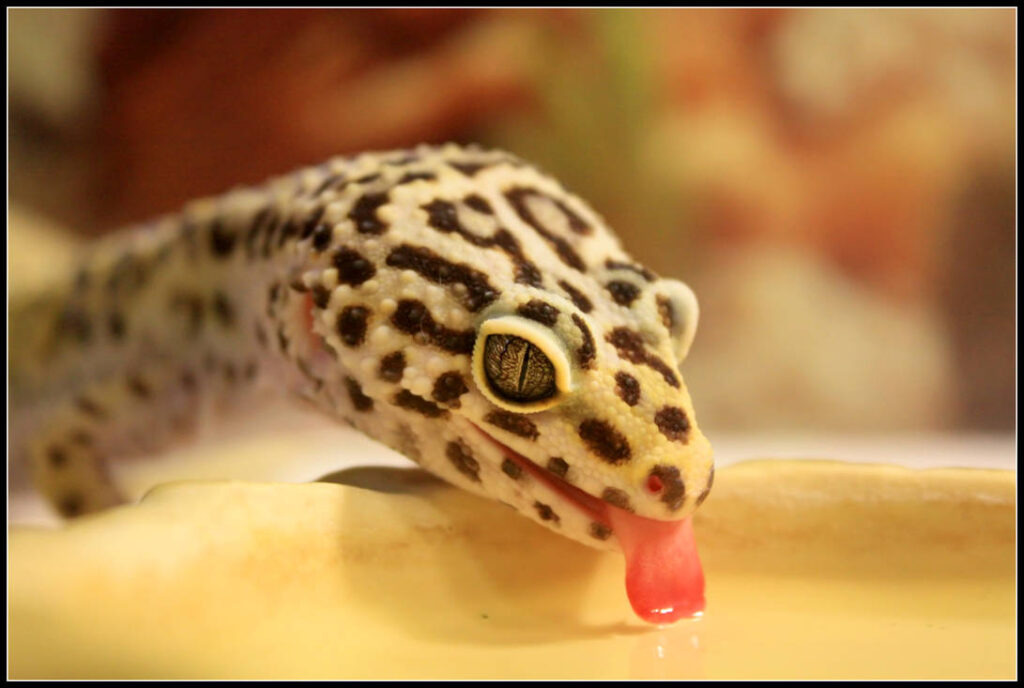
It’s important to know that geckos, even if they don’t drink like we do, absolutely need water to stay healthy.
Also, they have simpler needs compared to some other animals. Typically require only a small fraction, about 1 to 5%, of the total water intake compared to amphibians.
Hence, it is vital for geckos. It helps with digestion, keeps their body temperature right, supports their growth, and even helps them shed their skin. Water in their environment also affects their behavior, like when they mate, take care of eggs, or search for food.
So, while they might not show it in the same way we do, it is just as essential for them to lead a good and healthy life.
Key Considerations for Your Gecko’s Hydration Needs
When it comes to keeping your geckos properly hydrated, there are a few important things to keep in mind:
1. Water Safety: Keep It Clean
The water container you use needs to be clean. If it gets dirty, it can become a breeding ground for harmful stuff like algae and bacteria. To clean it, you can use a mixture of about 6 tablespoons of bleach in 4 cups of distilled water.
Then, let the container soak in this mix for about 3 minutes, then rinse it well and make sure it’s completely dry before you put it back in the enclosure. Also, if your water container is near a heat source, keep in mind that water can evaporate faster.
2. Helping with Shedding: Warm Soaks
Sometimes, your geckos might need warm soaks to help them shed their old skin. To do this, you’ll need a shallow container with warm water. So, It should be deep enough for them to soak in but not too deep to risk drowning. You can give them these soaks about 2 to 3 times a week, for about 15 to 20 minutes each time.
3. Avoid Water Stagnation: Regular Changes
No matter what type of gecko you have, it’s a good idea to change and refill their water at least twice a week. If they happen to poop in their water, change it as soon as you notice.
4. Right Humidity Levels: Finding the Balance
Having water in the enclosure can raise humidity levels. Even if it needs some humidity, too much can be a problem. Make sure to strike the right balance( around 40%). The kind of bedding you use and how well-ventilated the enclosure is can affect humidity levels too.
5. Temperature:
Leopard geckos prefer their water at room temperature or slightly warmer. Avoid using extremely cold or hot water, as it can discourage them from drinking.
Choosing the Perfect Hydration Solution for Your Leopard Gecko
Selecting the right water source for your beloved leopard gecko is a crucial decision that can significantly impact their health and well-being.
Spring Water: The Natural Choice
For those who seek to mimic the conditions of the gecko’s wild habitat, natural spring water emerges as the top choice. This pristine water source originates deep within the Earth, traversing porous rocks like limestone, where it undergoes a natural purification process. It is Mother Nature’s gift to these creatures.
In addition, bottled spring water, readily available in grocery stores, aligns with this natural preference. However, it often undergoes additional treatment, including exposure to ultraviolet light to eliminate harmful microorganisms and fine filtration to remove impurities such as silica and sand. While it may come at a slightly higher cost, the assurance of purity makes it a preferred option.
Yet, the caveat with using it lies in the mineral deposits that also can be left behind in water bowls and enclosures. A handy cleaning tip involves using vinegar to soak your dishes or cleaning rags for vivarium maintenance.
Tap Water: A Case-by-Case Consideration
The suitability of tap water for your gecko depends largely on your geographical location. Some areas boast tap water that meets human consumption standards, while others suffer from heavy contamination, potentially harboring harmful microorganisms.
Critics argue that tap water is unsuitable due to chemical additives used in its treatment, which can include chlorine, chloramines, and fluoride. Therefore, it’s worth noting that tap water can contain some beneficial salts and minerals.
If you choose to use tap water, there are methods to make it safer. These include allowing collected tap water to aerate for at least a day, transferring it between containers multiple times, or boiling it for approximately 15 minutes. However, to ensure the quality of your tap water, consider using reptile-safe water conditioners like ReptiSafe.
Filtered Water: Optimal Assurance
For those who prioritize absolute certainty about water quality, investing in a reliable filtration system is a wise choice. Various filtration systems are available on the market, capable of removing chlorine and pathogens while reintroducing essential minerals like calcium, magnesium, potassium, and sodium.
A recommended option is a Reverse Osmosis (RO) water filter system along with a re-mineralizer. This choice aligns with the practices of many aquatic setups for fish and amphibians, ensuring safety for reptilian companions.
Distilled Water: Proceed with Caution
While distilled water has been a long-standing choice among experienced gecko keepers for its purity, recent expert advice warrants caution. The complete removal of minerals renders distilled water tasteless and odorless but also acidic. Prolonged consumption can force the body to compensate by leaching minerals from teeth and bones to neutralize the acidity, potentially leading to long-term health issues.
However, it can be suitable when used with commercial diets rich in minerals and nutrients, such as Repashy’s Crested Gecko Diet meal replacement powder. Additionally, some hobbyists prefer distilled water for misting to avoid mineral deposits inside the enclosure.
Keeping Your Gecko Hydrated: Simple Ways for Their Well-Being
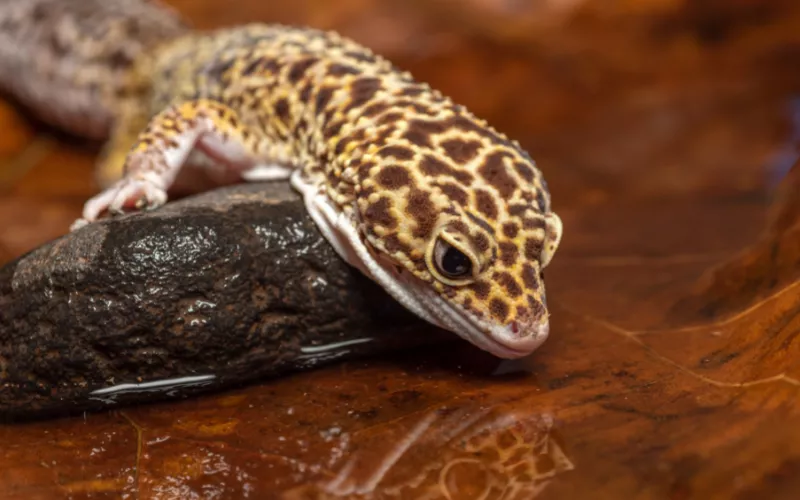
Every gecko owner has their own way of making sure their reptilian friends stay hydrated. Some like the high-tech approach, while others prefer a more hands-on method. Many find a middle ground. But no matter your style, remember: the need for water always comes first.
1. The Trusty Water Bowl
One of the most common ways to offer water to geckos is by using bowls or dishes. They come in different sizes, colors, and styles. You can even use everyday items like old cups or saucers as water dishes.
Moreover, you can find these bowls at pet stores or online. Some are plain and easy to clean, while others are designed to look like part of the habitat, with fake moss and plants. If you don’t want to refill the dish every day, some bowls come with detachable bottle dispensers, so you don’t have to refill as often.
Water dishes serve two purposes: drinking and soaking. If it likes to take a dip now and then, get a bigger bowl. But remember, not all are great swimmers, so make sure the water isn’t too deep to avoid accidents.
2. Water in Motion for Arboreal Geckos
Some species, especially those that live in trees, prefer drinking from moving water. You can mimic this by using a small air pump and an air stone (like the ones used in fish tanks) in the water bowl.
Further, you can also create a DIY drip system. Just poke one or two small holes in the bottom of a water jug or bottle and place it on top of the enclosure. Make sure the holes are big enough for a steady drip but not so big that it soaks the enclosure’s bedding. Position it so the water drips onto plants, branches, or into a small container inside the enclosure.
For more control, you can use a needleless IV drip set with a roller clamp to adjust the water flow.
If you prefer ready-made solutions, you can buy water features that imitate waterfalls. These often come with fake plants, filter pads, and adjustable water pumps. They’re easy to clean and refill. To blend them into your gecko’s home, add some rocks and extra plants around the base.
3. Misting Systems: A Simple and Effective Choice
Misting is a simple way to keep it hydrated, especially if they don’t like drinking from a bowl. You can use a handheld sprayer to mist their enclosure. This means you don’t have to worry about cleaning and refilling water bowls.
Even they are from dry areas can benefit from misting. But if you do mist, make sure the tank has good ventilation and the right temperature to avoid too much humidity, especially for geckos from hot and dry places.
If you have several reptiles to take care of, you can go for automated misting or rain systems. You can buy these systems or make your own with PVC pipes and micro-irrigation kits.
Also, rain systems work well for tropical geckos used to rain in the wild. But desert geckos might find too much water stressful, so keep that in mind.
Do Leopard Geckos Drink Water?
Yes, leopard geckos do drink water, although not as frequently as some other pets. While they primarily obtain moisture from their food, providing clean drinking water in their enclosure is essential for hydration and shedding.
How To Provide Water?
You can offer water to your leopard gecko through two effective methods. First, place a shallow water dish in their enclosure. Alternatively, you can mist the enclosure regularly, creating small pools on leaves and decorations for your gecko to drink from.
What Kind Of Water To Provide?
Leopard geckos can drink tap water, but it’s important to treat it with a water conditioner to remove chlorine and other harmful chemicals. Bottled water and conditioned tap water are safe options. Distilled water is not recommended due to its lack of minerals.
What To Look For When Buying A Water Dish?
When selecting a water dish, consider its size to avoid raising humidity levels excessively and its depth to prevent drowning. Ideally, the dish should be shallow enough for your gecko to climb into but not deep enough to submerge itself.
Best Water Dish For Leopard Geckos
Some recommended water dishes include the Reptile Decor Water Dish, Exo Terra Water Dish, and SLSON Water Feeding Dish, each with features like durability, easy cleaning, and safe materials.
Where To Place The Water Dish?
Water dish placement should consider enclosure humidity. If humidity is at an optimum level, place the dish on the cool side. If struggling to maintain humidity, place it on the warm side. Ensure humidity remains between 30% and 40% with a digital hygrometer.
How Often Should I Change The Water?
Due to the possibility of geckos climbing in, soaking, or defecating in the water, it’s crucial to provide fresh, clean water daily.
Why Is My Leopard Gecko Sitting In The Water Dish?
Leopard geckos may sit in their water dish for various reasons, including helping with shedding, cooling down in high temperatures, or simply exploring their environment.
Why Is My Leopard Gecko Poop In The Water Dish?
Some leopard geckos may defecate in their water dish because water can relax them and facilitate elimination. In such cases, the water should be changed more than once a day.
How Long Can Leopard Geckos Go Without Water?
Leopard geckos can go for about two days without drinking water. However, extending this period can lead to dehydration and serious health issues.
How To Get A Leopard Gecko To Drink Water?
To encourage drinking, consider misting the enclosure to create droplets for them to drink or placing a small drop of water on your gecko’s nose, which it will naturally lick.
Is Waterfall Recommended?
Yes, Waterfalls and water fountains can encourage natural drinking behavior in leopard geckos, but they require careful consideration. They are not suitable for beginners and can increase humidity levels, so proper sizing and maintenance are essential.
Do Leopard Geckos Need Daily Misting?
No, Adult leopard geckos, as they obtain moisture from their diet, typically require misting about twice a week, with additional misting during shedding. Hatchlings and baby geckos under three months benefit from daily misting, along with access to a humid hide.
Final Words
In conclusion, when it comes to providing tap water for my leopard gecko, I have learned that it can be a suitable option. However, it’s essential to treat the tap water with a water conditioner to remove chlorine and other potentially harmful chemicals. Ensuring the water is clean and safe for my pet is my top priority.
Nevertheless, I’ll also keep in mind that my furry can benefit from alternative water sources, such as bottled water or conditioned tap water, which offer peace of mind and contribute to its overall well-being.

